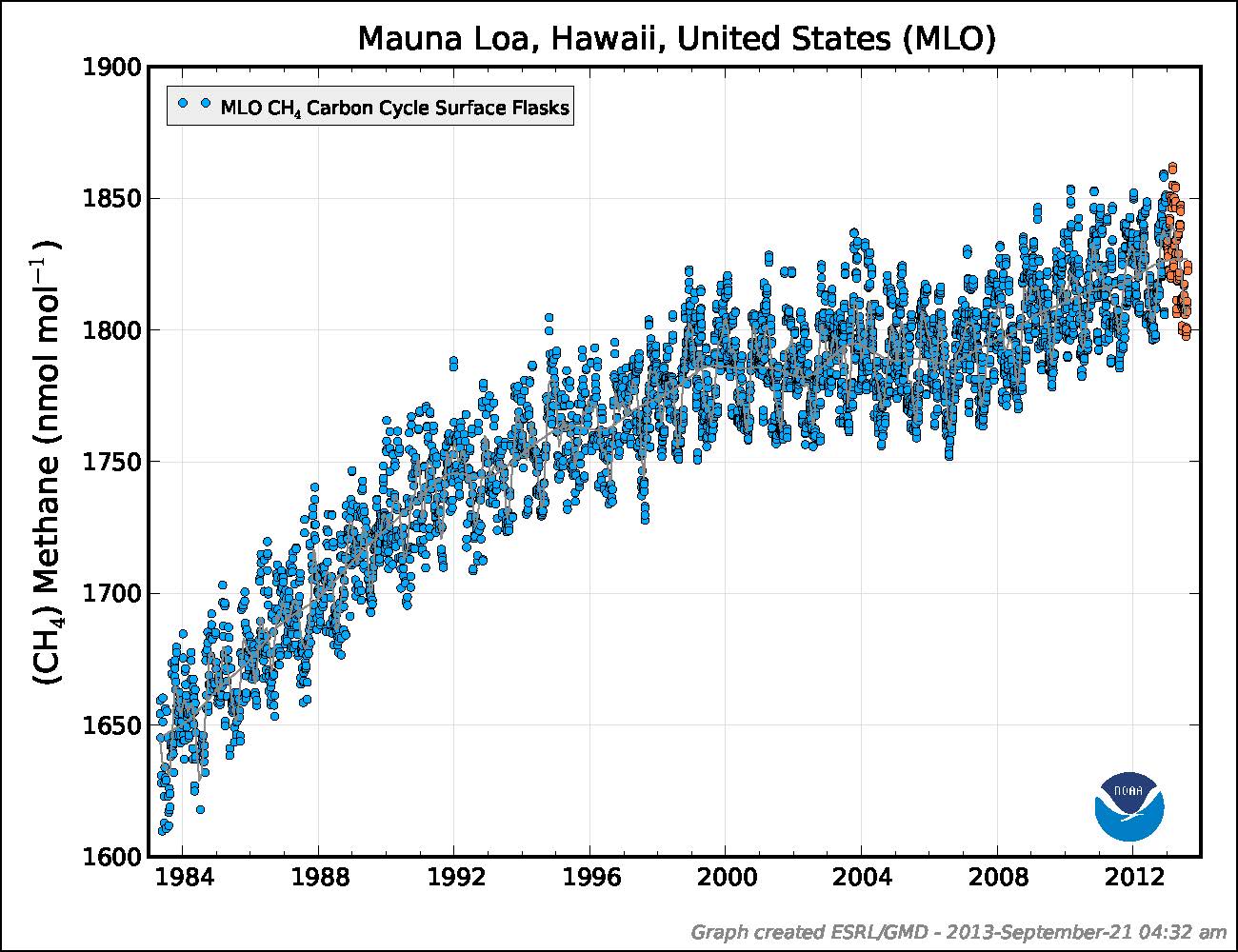{multithumb thumb_width=200}
A group of international scientists have joined forces to synthesize the scientific evidence on intriguing decadal trends in the greenhouse gas methane. They.48 Scientists from 34 Institutions worldwide, including SRON, cooperate under the umbrella of the Global Carbon Project (GCP), trying to solve the complicated global methane puzzle. The aim is to reevaluate the recent scientific literature in support of the contribution of IPCC Working Group 1 to its, soon to be released, 5th Assessment Report.

The global trend in the atmospheric abundance of methane has shown significant fluctuations in recent years. During the 1980s, background levels of methane continued the steady increase of earlier decades. In the early 1990s, growth rates gradually declined until a plateau was reached around the turn of the millennium. Then, after the year 2007, CH4 started rising again as it still does today. Various explanations and pieces of evidence were put forward, turning the intriguing question about the underlying causes of this behavior into a complicated puzzle.
Scenarios
The cooperating scientists, who have published their results in the latest edition of Nature GeoScience, have condensed the available information into a few plausible scenarios. These were tested against the long-term archive of ambient greenhouse gas measurements from the global monitoring network. This effort yielded a single scenario, which satisfies most of the observational evidence and is therefore considered the most plausible.
This scenario can be summarized as follows. The declining growth rate during the 1990’s is most likely caused by decreasing to stable emissions from the use of oil, coal and gas. In the same period agricultural emissions (e.g. from livestock and rice agriculture) were stable or slightly increasing. The renewed increase after 2007 is explained by increasing emissions from fossil fuel use combined with increasing emissions from natural wetlands. However, the relative importance of these two factors remains uncertain.
Easier target
In the context of climate change mitigation, the outcome of this study poses both a challenge and an opportunity. The challenge is to improve the detection and source attribution of methane by the combined use of surface monitoring networks, satellites, and models. The opportunity is to make use of the sensitive balance of methane sources and sinks, which varies even without costly emission reduction policies. As if it advertises itself as a much easier target for short-term climate change mitigation than carbon dioxide.


